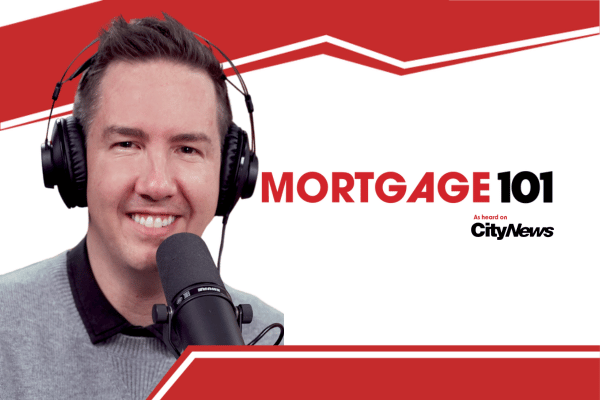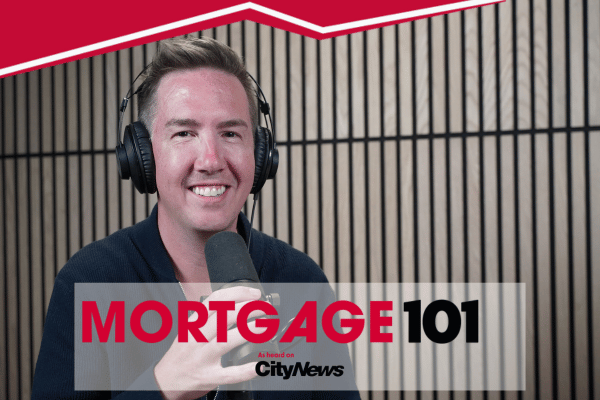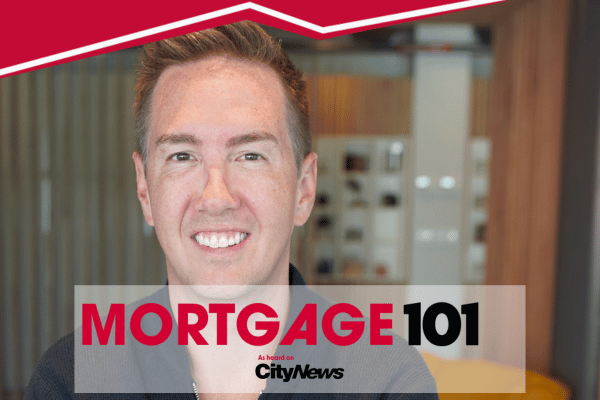How affordable is the Nova Scotian market? Real estate is more affordable in Nova Scotia compared to other markets. Clinton and Todd reflect on the challenges of buying starter homes, citing increased property values and stagnant income growth.

Mortgage 101 – Mortgage Trends and Indebtedness with Sandi Burns
From rising debt levels to the impact of refinances and renewals, hosts Clinton and Todd sit down with guest Sandi Burns to provide insightful analysis and predictions for navigating the ever-changing landscape of homeownership. In this segment of Mortgage 101, we dive into the current trends shaping the mortgage market.
Mortgage risk and trends in Canada
Todd Veinotte
Alright, welcome back and Mortgage 101, your guide to homeownership with myself Todd Veinotte, Clinton Wilkins and guest, Sandi Burns. Sandi, you are for those who are tuning in your expertise is? For those who didn’t hear you in the last segment?
Sandi Burns
Residential mortgages! From the risk side of things.
Clinton Wilkins
So Sandi works for the big bad bank or, you know, medium size, big bad bank as, you know, as some consumers might think of it. But Sandi, you just have such a wide range, as a risk person, of experience and what you get to be involved with every day. I’m so interested to hear, you know, some of the trends that you’re seeing. We hear in the media that, you know, Canadians are just so indebted and the debt levels have really been increasing. You know, what I’m hearing from some reports from Equifax, that we’re starting to see some cracks there as well, people are starting to miss their credit card payments, and their loan payments. You know, historically, Canadians usually do a pretty good job at paying their mortgages. And I think still, the arrears are at a very, very low state, at least from what we’re hearing and the Canadian Bankers Association. When they met they said that arrears are still maybe in that 2019 level, but maybe are on the trend of increasing. So I’m kind of interested to hear what trends you guys are seeing and hearing, and you know, what insights you can share.
Sandi Burns
Indeed yeah, it’s a really interesting time to be in the mortgage industry. And I think I’ve said that for the last five years. So it’s every year but really, it really is right now. I think some of the key things we’re starting to see, there are definitely cracks, forming. Equifax put out a report, their Q4 report, stating that a lot of mortgage holders are starting to miss payments, and maybe not on their mortgage, maybe on a credit card, because the credit card balance has crept up. They’re trying to keep up with just regular living expenses, or they’ve missed a car payment. BMO exited out of the auto loan industry, because they’re anticipating super high arrears going forward. And so we are starting to see those cracks. And I don’t think we’ve reached the peak, to be honest with you, I think we’re not going to see the peak of this until 2025 2026.
Clinton Wilkins
Like when these mortgages come up for renewal. I don’t know what the stat is. But there’s an astronomical amount of mortgages that are renewing this year, next year, and the year after. Where the bulk of Canadian mortgages are coming up for renewal. And really renewing higher rates.
Sandi Burns
Because they originated at the super low pandemic rates, and now all of a sudden, they’re going to be renewing it at ridiculously high rates. So we are seeing increases in refinances. We are starting to see folks staying more with financial institutions simply because they can’t qualify at another FI.
Clinton Wilkins
The stress test?
Sandi Burns
The stress test! And the stress test, I’ll be honest when OSFI rolled it out in June 2021, absolutely the right thing to do. We were qualifying folks at ridiculously low rates, and there was no way there that those rates were going to stay where they were. However, today, we’re now qualifying folks at like, 7%, 8%, 9%.
Clinton Wilkins
If they have a HELOC, yeah, like 9%, 9.5%, it’s it’s crazy. It’s wild.
Sandi Burns
And it’s really challenging for folks to qualify. So a lot of people are staying put. So where they’re refinancing with their same FI, trying to get some of that equity out of their home because housing prices in most markets have held pretty stable. And then we are starting to see those delinquencies increase and it’s in certain pockets. So newer origination, so folks that originated over the last five years, definitely. And then fixed income. So 65 years old, and older on fixed income. When at one point, you know, no problem, the pension covered their mortgage payment and their living expenses. But now because of the cost of living being so high and interest rate so high, they’re really not able to make ends meet.
Clinton Wilkins
I never thought about that as a segment that’s being challenged. We see a lot of retirees in our office, we actually see some people that come and see us before they retire to kind of get their affairs in order and all the things, but you never think of retirees having financial hardship due to the cost of living. But it’s not just the mortgage rates. I know it’s a car, you know, it’s the groceries, it’s the gas, it’s everything that’s kind of adding up to being more challenging, you know, for everybody.
Sandi Burns
Absolutely. Yeah. And the interesting thing is, if we’re not seeing it on the mortgage end, which we’re not yet. The CPAs reporting still, you know, arrears rates are sitting at about where they were in 2019. They will start to creep up but they’re not there yet. We are seeing it on the the unsecured side of debts. And unsecured lines of credit. And again, the younger segment, like 35 years and younger, and then a fixed income segment, 65 plus. The unsecured debt, they’re really starting to see arrears.
Todd Veinotte
So the climate or the environment that we’re in right now is it unprecedented for you in your years of experience?
Sandi Burns
In my years experience, yeah, I’ve been doing this for almost 20 years. And, you know, we were a part of all of this pre 2008. Part of the market crash in 2008. And then all of the regulations that went into place after that, so we weren’t qualifying folks, you know, the NINJA mortgages; no income, no job approvals and those types of things.
Clinton Wilkins
I remember the good the good old days, 100% financing, 40 year amortizations. You know, we are in, I think, a more conservative spot now than we were. I’ve been doing this for almost 19 years and I can tell you; big, big shift. Like we were doing refinances at 95%, like high ratio insured, like just so much wild stuff, we were giving people a mortgage, if they had a heartbeat, basically. Even from some of these alt lenders, you know.
Sandi Burns
Even here in Canada, 95% refinance on a HELOC, and none of it was locked in. It was all revolving, it’s insane. You we weren’t thinking about, what happens if the market shifts?
Todd Veinotte
Because I was always under the impression that our banking industry was a lot more robust than the United States banking industry was and is, is that true still, is it?
Sandi Burns
I would say we are, I would say robust. And part of the reason is we are federally regulated. So in the States, they’re very much state regulated. So the feds do have some overarching guidelines. But we are really, without question federally regulated unless you go into an unregulated space with a private lender or something.
Mortgage lending challenges and unregulated credit
Clinton Wilkins
And there’s certainly been an uptick. I think Prime clients have been forced into alternative mortgages, and some of those alternative mortgage clients might have been, you know, forced into private lending. Just due to things like the stress test, which I think is challenging for borrowers. We see good borrowers every day, that we might have been able to be approved, you know, in a space five years ago, or even three years ago, or two years ago, that now have to be forced into some of these more challenging, you know, mortgage products.
Todd Veinotte
So the stress test today is still applicable? Correct?
Sandi Burns
It is!
Todd Veinotte
Okay, so it would now be up at around 9% or so?
Clinton Wilkins
Well it’s 2%, above your contract rate currently, or floor of 5.25%. So, you know, the challenge is that pretty much every mortgage now is in that, you know, 5%, 6%, 7% range. And if you’re taking a home equity line of credit, it’s 2% above, you know, that cost. So, it certainly can be a challenge for people to qualify. And I think that brings it back to our previous segment around fraud. You know, everyone wants to get a prime mortgage. I think that’s what borrowers really strive to do. But if you’re not claiming enough income in your income tax, you know, in terms of self employed, that’s a challenge. If you’re not making enough money, for why you want to borrow, this is I think, when these things start happening. But, I think the ones that were maybe on the edge were getting approved. I would say even more recently like the approach to bank lenders and lenders in general have been that borrowers get approved at a much higher debt servicing ratio than what might have been the standard a couple years ago, because of the rates. It’ll be interesting to see how these borrowers are paying. Because I think right now, they’re doing a pretty good job overall.
Sandi Burns
I would say, yeah, and I think the key there is, yes, we are looking at, sometimes a looser, debt servicing. However, we’re not looking at how much access to credit, they still have. The unsecured that’s the key, right? And it is unregulated. You know. OSFI doesn’t have any oversight on that stuff, which is quite challenging.
Clinton Wilkins
Now there’s no oversight on credit cards, lines of credit, and car loans, by and large from the federal government. But yet they’ve regulated I think, to the enth degree mortgage lending. And obviously, that’s what we talk about here on the show in real estate, but we don’t really like do a deep dive into what’s going on, you know, in the other credit facilities. So you know, lenders can just really do whatever they want for the other stuff, is that true?
Sandi Burns
I think there’s, there’s industry kind of norms. However, if it’s within your risk profile, and it’s something that you’re choosing to do, then I think folks will build whatever guidelines they want to make it happen. But at the end of the day, a risk profile, we don’t want to be losing money, and we don’t want to be putting consumers in a space where they’re going to go into default. And so considering both of those things, it’s important.
Clinton Wilkins
And it almost sounds predatory in a way. I don’t know what you guys think. But you know, when you have a consumer that has equity in their home, and if they can’t qualify for a traditional refinance, but you can go and get a credit card at 19%, 20%, 22%, I think the system in some ways is flawed. And, you know, I understand protecting consumers from themself, I’m all about that. But, I think sometimes like when there’s that equity available, and you can’t qualify due to things like the stress test, but you can get a credit card, something is wrong.
Sandi Burns
It’s a little backwards. And I think part of the challenge is, if I’m applying for credit card, we might look a little bit into household income, household debt, but really, it’s me as an individual who is qualifying for that credit card. Whereas with a home, we’re looking at the household, and anyone that that has an interest in that home.
Clinton Wilkins
And everything’s being verified, like we literally checked every single box, like we check every single document. Where with, you know, credit cards and car loans, oftentimes, there’s no verification required. Like whatever you state, they’re just taking that for face value.
Todd Veinotte
That’s right. Well, at a car dealership, in particular, if you’ve got top credit, if you’ve got great credit, then they will not ask for income verification.
Sandi Burns
That’s right!
Clinton Wilkins
To me that is wild. Because I’m in such a highly reggulated space.
Todd Veinotte
While I could walk into a Lexus dealership right now, and and exaggerate my income greatly. And I have excellent credit, and therefore they would assume that and they’ll sell me that car. That happens regularly.
Sandi Burns
Absolutely. Yeah. Yeah.
Clinton Wilkins
It’s pretty wild when you think about it.
Todd Veinotte
But look, the dealership wants to sell that car, they want to get funded.
Clinton Wilkins
Nothing against Lexus. I mean, that was in the song. So we won’t we won’t hold it on them.
Todd Veinotte
I’m just saying that. But this is what happens when when you start to relax standards when it comes to lending practice. And the mortgage industry has, as we talked about these, these loans that you were you’re referencing earlier, and I think it’s important that we learn these lessons, right. And because we want to protect a the inventory be the mortgage industry and be and see the, the the consumer.
Clinton Wilkins
The consumer to production, I think for me is number one, number one. Because at the end of the day, if we’re not protecting the consumer, we don’t have an industry anymore. I don’t have a job. You know, we don’t have a show. And I think that’s why it’s so important. And we’re certainly seeing a huge uptick in refinances, specifically clients that are at renewal. We’re seeing them take longer amortizations and we’re seeing consumers taking out equity, you know, if they bought a home, you know, prior to 2020, typically, they have a lot of equity in their homes, at least here in Halifax in Nova Scotia. Like are there any trends around you know, refinances? Are we are we seeing as an industry more refinances now than we were before?
Sandi Burns
I think it would be a large part of most banks business over the last two years, was refinances. The housing market kind of dried up when the interest rates were so high inventory was was low. And and people just were not out there trying to look for a new home because they couldn’t qualify. However, they could look at taking equity out of their own right. And they could pay out a lot of debts at the same time. So debt consolidation refinancing, and, you know, sometimes playing the right game, looking at a one year two or three year term versus a five year fixed or something.
Clinton Wilkins
Huge shift. Like I think the trend was, you know, 60% of Canadians were taking a five year. I have never done so many three year fixed as I have in the last 12 months was insane.
Todd Veinotte
Well, we’re getting tight on time Clinton, would you like to thank our esteemed guest?
Clinton Wilkins
Thank you, Sandi. Thank you so much. I think you know, it’s so interesting to hear perspective from the other side. You know, I think our listeners hear me, you know, talking about all kinds of different lenders and you know, really what we go through, but it’s interesting to hear what the bank has to deal with every day.
Todd Veinotte
Sandi, thanks so much. It was great meeting you.
Sandi Burns
Great to meet you as well. Thanks so much for having me on.
Todd Veinotte
You got it Mortgage 101 your guide to homeownership! We’ll be right back.


